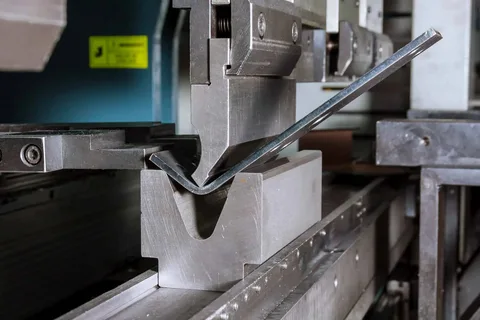Metal bending is an essential process in many industries, from construction to manufacturing, and involves shaping metal into desired forms using specialized equipment. While it is a highly valuable technique, it comes with significant safety risks if not performed correctly. Workers handling metal bending tasks must be aware of potential hazards and follow strict safety guidelines to prevent accidents and injuries.
This article outlines key safety tips every worker should know when performing metal bending, ensuring a safe and productive work environment.
Understand the Hazards Associated with Metal Bending
Before operating any metal bending machinery, it is essential to understand the potential hazards involved. Metal bending often requires applying immense force to shape metal sheets or bars, creating risks such as crushed fingers, severe cuts, and even equipment malfunction. In addition, sharp metal edges and flying debris can cause lacerations or eye injuries if workers are not properly protected.
Another common hazard is the risk of repetitive strain injuries. Metal bending tasks often involve repetitive movements and awkward postures, which can cause musculoskeletal problems over time. Workers should be trained to recognize early warning signs and adopt ergonomically safe practices to reduce these risks.
Wear Appropriate Personal Protective Equipment (PPE)
Personal Protective Equipment (PPE) is critical when performing metal bending tasks. Workers should always wear heavy-duty gloves to protect hands from sharp edges and burns, safety goggles or face shields to guard against flying debris, and steel-toed boots for foot protection. Additionally, hearing protection may be necessary in environments with loud machinery noise.
It is equally important to wear fitted clothing without loose ends that could get caught in bending machines. Hard hats may also be required in areas where overhead hazards exist. By investing in proper PPE and ensuring it is worn consistently, workers significantly reduce the chances of workplace injuries during metal bending.
Follow Proper Machine Operation Procedures
One of the most effective ways to prevent accidents in metal bending operations is to follow correct machine operation procedures. Workers should never operate metal bending machines without proper training and certification. Each piece of equipment has specific safety instructions that must be adhered to, including checking for proper alignment, lubrication, and secure clamping before starting the bending process.
Emergency stop buttons should be tested regularly, and operators must know their locations to react quickly in case of an emergency. Additionally, bending machines should only be operated when all guards and safety devices are in place and functioning. Ignoring these procedures not only endangers the operator but also puts other workers in the vicinity at risk.
Maintain a Clean and Organized Work Area
A cluttered work area significantly increases the risk of accidents during metal bending operations. Tools, scrap metal, and other materials left scattered on the floor can create tripping hazards, while poor lighting may make it difficult to detect potential dangers. Maintaining a clean and well-organized workspace ensures that workers can move freely and handle materials safely.
Proper storage of raw materials and finished parts is also important. Metal sheets and bars should be stored in designated racks to prevent accidental falls or tipping. Furthermore, ensuring that pathways and emergency exits remain unobstructed at all times is crucial for overall workplace safety in metal bending environments.
Perform Regular Maintenance and Safety Checks
Metal bending machines endure significant stress during operation, which can lead to wear and tear over time. Performing regular maintenance checks is essential to keep machines in optimal working condition and prevent unexpected malfunctions. Workers should inspect equipment before each use, checking for loose bolts, damaged parts, and proper lubrication.
Employers should establish a routine maintenance schedule that includes professional inspections and servicing of metal bending machines. Additionally, safety checks such as verifying guard placements, emergency stop functionality, and alignment accuracy help reduce risks. A well-maintained machine not only enhances safety but also ensures precise and efficient metal bending operations.
Regular maintenance also extends to replacing worn-out components before they become hazardous. Belts, gears, and hydraulic systems should be monitored closely, as any malfunction in these parts can lead to catastrophic accidents. Operators should immediately report any unusual noises, vibrations, or delays in machine response, as these often indicate underlying mechanical issues. Prompt repairs prevent costly downtime and significantly reduce the risk of accidents during metal bending operations.
Moreover, businesses should keep detailed maintenance logs for every piece of equipment. These records help track service intervals, identify recurring problems, and maintain compliance with workplace safety standards. Proper documentation can also serve as evidence during audits or inspections, showcasing the company’s commitment to safety in metal bending activities. Ultimately, consistent maintenance and safety checks ensure that every bending process is carried out with maximum precision and minimum risk.
Conclusion
Metal bending is an indispensable process in various industries, but it demands strict adherence to safety protocols to protect workers from serious injuries. By understanding hazards, wearing the right PPE, following operational procedures, keeping work areas organized, and performing regular maintenance, businesses can create a safe and productive work environment.
